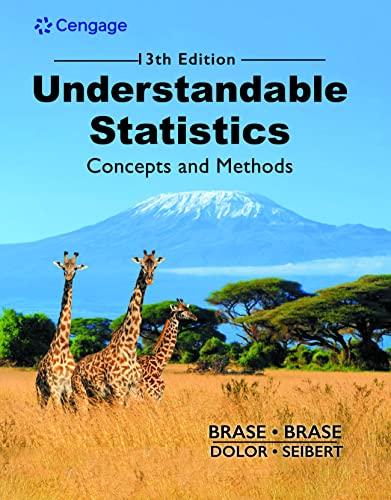Ecology: Wolves Wolf packs tend to be large extended family groups that have a well-defined hunting territory.
Question:
Ecology: Wolves Wolf packs tend to be large extended family groups that have a well-defined hunting territory. Wolves not in the pack are driven out of the territory or killed. In ecologically similar regions, is the size of an extended wolf pack related to size of hunting region? Using radio collars on wolves, the size of the hunting region can be estimated for a given pack of wolves. Let x represent the number of wolves in an extended pack and y represent the size of the hunting region in km2 /1000. From Denali National Park we have the following data.
x wolves 26 37 22 69 98 ykm2 /1000 7.38 12.13 8.18 15.36 16.81 Reference: The Wolves of Denali by Mech, Adams, Meier, Burch, and Dale, University of Minnesota Press.
(a) Verify that Sx 5 252, Sy 5 59.86, Sx2 516,894, Sy2 5 787.0194, Sxy 5 3527.87, and r < 0.9405.
(b) Use a 1% level of significance to test the claim r . 0.
(c) Verify that Se < 1.6453, a < 5.8309, and b < 0.12185.
(d) Find the predicted size of the hunting region for an extended pack of 42 wolves.
(e) Find an 85% confidence interval for your prediction of part (d).
(f) Use a 1% level of significance to test the claim that b . 0.
(g) Find a 95% confidence interval for b and interpret its meaning in terms of territory size per wolf.
parts
(a) and
(b) relate to testing r. Part (c)
requests the value of Se. Parts
(d) and
(e) relate to confidence intervals for prediction. Parts
(f) and (g) relate to testing b and finding confidence intervals for b .AppendixLO1
Step by Step Answer:

Understandable Statistics Concepts And Methods
ISBN: 9780357719176
13th Edition
Authors: Charles Henry Brase, Corrinne Pellillo Brase





